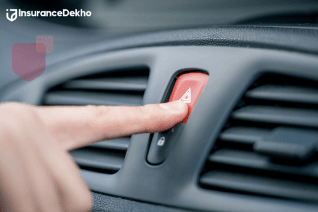Tyre Speed Ratings: Everything You Need to Know
Tyre Speed Ratings in India
Knowing the differences between different car parts is essential in today's quickly changing automotive industry to guarantee both your safety and your car's best performance. The tyre is one such important part that is fundamental to the operation of your car. While a tire's performance and suitability are determined by a number of factors, the "tyre speed rating" is an important one that is frequently disregarded. We go deeply into this subject in this post, giving Indian car aficionados and regular drivers alike all the information they require regarding tyre speed ratings.
Table of Contents
Understanding Tyre Speed Ratings
The maximum speed a tyre can sustain safely over time is indicated by tyre speed ratings, sometimes referred to as speed symbols. Put simply, it's an indication of the maximum speed at which a tyre is assured to stop performing as intended. This rating, which correlates to a particular speed in kilometres per hour, is commonly represented by a letter, ranging from A (the lowest) to Y (the highest).
Why are Tyre Speed Ratings Important?
Not only can you maximise performance but also ensure safety by making sure your car is fitted with tyres that are rated for the right speed. The speed rating of a tyre has an impact on handling, ride comfort, and even fuel efficiency in a vehicle. Furthermore, utilising tyres with a lower speed rating than necessary when driving at high speeds can result in disastrous tyre failures.
With the variety of road surfaces found in the nation—from pristine motorways to rough rural roads—having the proper tyre may greatly improve driving safety and enjoyment while lowering the chance of collisions.

Factors Affecting Tyre Speed Ratings
The following variables are taken into consideration while calculating a tire's speed rating:
-
Tread Design:
How heat is distributed can be affected by the tread design of a tyre. Higher speed tyres have a tendency to dissipate heat more effectively, which is important because too much heat can accelerate tyre deterioration.
-
Tyre Composition and Structure:
A tire's speed capabilities are mostly determined by the materials it is made of, such as the kind of rubber compound, and by the internal construction, which includes the number of layers and materials of the tire's carcass.
-
Load Capacity:
The load on a tyre might affect its speed rating. At speeds that it could manage with a lighter load, a tyre that is fully loaded could not be safe.
-
External Factors:
Tyre performance can be impacted by ambient temperature. Compared to intense heat, tyres may not perform the same in extremely cold temperatures.
-
Age of the Tyre:
Tyres deteriorate with time. Even with little use, an older tyre may not function as well as it should because of things like rubber deterioration.
How Are Tyre Speed Ratings Calculated by Manufacturers?
Tyre speed ratings are developed under carefully monitored laboratory settings, guaranteeing uniformity in the sector. This is a broad synopsis of the procedure:
-
Controlled Environment:
Tyres are tested in environments that are carefully monitored, typically using devices that replicate various speeds. This guarantees that the outcomes are not influenced by outside variables.
-
Ramping Up Speed:
To assess the tire's capacity to disperse heat and preserve its structure, the speed is gradually increased during the test at predetermined intervals and held for a predetermined amount of time.
-
Evaluation:
The tyres are examined for indications of wear, tread displacement, and structural failures following the testing.
-
Categorisation:
Tyres are then divided into various speed categories, each of which represents the highest speed the tyre is safe to handle, based on the results of these tests.
It is important to note that these tests are stringent and made in accordance with international standards to guarantee the highest level of user safety.
How to Select the Right Speed Rating?
In order to select the appropriate car tyre speed rating, let's analyse the speed rating system and learn what each letter means.
1. How to decode the Tyre Speed Rating Chart?
A tyre's speed rating is typically listed on its sidewall, along with other important details like its size and load capacity. Below is a summary of typical speed ratings:
|
Tyre Speed Rating |
Permissible Top Speed |
Vehicle Type |
|
L |
120 km/h |
Light Truck, and Off-road Vehicles |
|
M |
130 km/h |
Spare Tyre |
|
N |
140 km/h |
Spare Tyre |
|
P |
150 km/h |
4X4 Wheel Drive |
|
Q |
160 km/h |
4X4 Wheel Drive |
|
R |
170 km/h |
Heavy Duty Light Trucks |
|
S |
180 km/h |
Sedans and Vans |
|
T |
190 km/h |
Sedans and Vans |
|
U |
200 km/h |
Sedans and Vans |
|
H |
210 km/h |
Sedans and Vans |
|
V |
240 km/h |
Sports Cars |
|
W |
270 km/h |
Exotic Sports Cars |
|
Y |
300 km/h |
Exotic Sports Cars |
|
Z |
240 km/h |
Sports Cars |
|
ZR |
> 240 km/h |
Sports Cars |
2. Choosing the Appropriate Speed Rating
You have to follow the advice provided by the car's manufacturer to pick the right rating. The manufacturer's website or the handbook for your car should have all the information you need. Generally speaking, you should always select tyres that have a speed rating that is higher than the rating the manufacturer recommends.
3. Impact on the Performance of the Vehicle
The speed rating can affect the overall performance of the car, including:
- Handling: Smoother driving is generally associated with higher speed ratings because of improved vehicle handling.
- Comfortable Ride: Tyres with the right speed ratings are made to better absorb shocks from the road.
- Fuel Efficiency: By lowering rolling resistance, optimal speed ratings can also have an impact on a vehicle's fuel efficiency.
4. Safety Points to Remember
One of the most important safety considerations is to follow the recommended speed rating. Tyre failures may result from using tyres with a lower speed rating than what is advised, particularly while driving at high speeds.
How to Determine a Tyre's Speed Rating?
It is very simple to find a tire's speed rating. Usually, it is indicated on the sidewall of the tyre. Here's where to look for it:
- Find the Alphanumeric Code: Each tyre has an alphanumeric code, such as "205/55R16 91V," on the sidewall.
- Check Key Character: This sequence's final letter represents the speed rating of the tyre. In the example shown, the speed rating is denoted by 'V'.
- Consult a Speed Rating Chart: After determining the letter, you can find out the maximum speed that corresponds with that rating by consulting a tyre speed rating chart. Let's take the classification 'V', which normally denotes a maximum speed of 240 km/h.
Make sure the tyre you select has a speed rating that corresponds with both your car's maximum speed and the driving conditions you typically encounter.
Useful Advice for Drivers
1. Knowledge and Awareness
Learning about the importance of tyre speed ratings is the first step. Having knowledge of this factor can help you choose tyres with more knowledge.
2. Expert Counselling
For advice on determining the appropriate speed rating for your car, consult experts in the industry. The majority of auto shops and tyre dealers can offer guidance in this area.
3. Frequent Checking
Make sure your tyres are in good condition and that they match the recommended speed rating by giving them a regular inspection. Whatever the speed rating, the state of the tyres can affect how safely and effectively the car operates.
4. Respect for Traffic Laws
To guarantee your safety, always abide by the posted speed limits and traffic laws on Indian roads, regardless of the speed rating of your tyres.
In summary
A safe and enjoyable driving experience is largely dependent on being aware of and following tyre speed ratings, particularly in a multicultural nation like India. The speed rating of a tyre may seem like a small element, but it has a big impact on handling, comfort throughout the ride, and even fuel efficiency when it comes to vehicle performance. Furthermore, choosing the proper tyre with the optimum speed rating is essential to preventing potentially disastrous tyre failures, particularly when driving at high speeds.
Tyre speed ratings are a crucial part of vehicle performance and safety. As automotive technology continues to advance, let us make efforts to comprehend and appreciate the components that go into making driving safer and more pleasurable.
FAQs
1: What is the meaning of a tyre speed rating?
In response, a tyre speed rating is a classification that shows the highest speed at which a tyre can be used safely without having malfunctions or performance problems. Each letter, which can be any letter between A and Y, stands for a different maximum speed limit in kilometres per hour.
2: How do I locate my tire's speed rating?
The tyre code is usually imprinted on the sidewall of the tyre, which indicates the speed rating of the tyre. Along with other important details, this code contains information on the tire's size and load index. It will appear at the end of this code as a single letter.
3: Is it required to adhere to tyre speed ratings?
Yes, sustaining vehicle performance and safety requires sticking to the tyre speed ratings. Particularly while travelling at high speeds, using tyres with the wrong speed rating increases the risk of tyre breakdown and accidents.
4: Can I fit my car with tyres that have various speed ratings?
It is highly advised that you fit your car with tyres that have the same speed rating. Different speed-rated tyres can cause uneven and unexpected handling of the vehicle, which can be dangerous.
5: Can I select a tyre with a faster speed rating than what the manufacturer of the car recommends?
Yes, you are able to choose tyres with a speed rating higher than what is advised. It might provide faster acceleration and better handling. It might, however, also be more expensive and result in a less comfortable trip.
6: Will a tyre with a higher speed rating have more grip?
The answer isn't always that. Higher speed rated tyres are frequently constructed with materials and technologies that offer more grip, although the speed rating only represents the tire's safe maximum speed capacity. Other elements that affect grip include the tread pattern, rubber compound, and structure of the tyre.
7: How does a tire's speed rating affect its price?
In order to properly withstand faster speeds, tyres with higher speed ratings are typically more expensive. This is because they are constructed using greater materials and technology. These tyres may also provide better handling and grip, among other performance features.
8: Does following the speed rating on tyres improve fuel economy?
Certainly, utilising tyres with the proper speed rating can help reduce fuel use. These tyres are made to provide the best rolling resistance possible at the speeds at which they are rated, which can improve the fuel efficiency of the car.
9: Are there any particular speed limits that are advised for Indian roads?
The instructions provided by the vehicle manufacturer primarily determine the recommended tyre speed rating. It is normally encouraged to follow the manufacturer's recommended speed rating to guarantee safe and optimal vehicle performance, especially considering the variety of road conditions in India.
10: If I don't follow India's suggested tyre speed ratings, would there be legal repercussions?
Currently, there are no established legal ramifications in India for disregarding tyre speed ratings. But deviating from the advised speed limits could endanger your safety and perhaps void the tyre guarantee. For your safety when driving, it is always recommended to abide by the manufacturer's instructions.














































